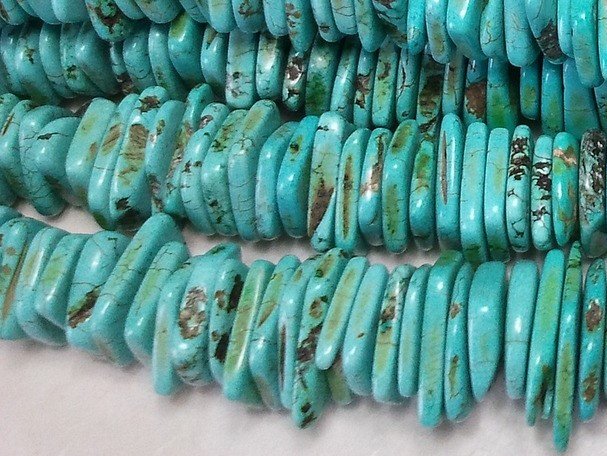Turquoise & its common Imposter
Turquoise is likely one of the first gemstones ever mined as turquoise beads have been found in Mesopotamia dating back to around 5000 BC.
True turquoise varies in colour from ski-blue to green, depending on the amount of iron and copper it contains. Brown to black veins of iron oxide (referred to as spider webbing) are commonly seen in cut stones.
The massive habit of turquoise makes it a desired stone for jewelry and carving.
However, as a lot of turquoise is very soft, porous and brittle, it needs to be stabilized with wax, resin or other binding material to make it durable enough for cutting. The colour of the stone may also be enhanced by dye during the stabilizing process.
Untreated turquoise is hard to find and highly sought after. It is typically seen in high-quality one-of-a-kind piece where the natural untreated aspect of the stone is a key selling feature.
To meet the high demand for turquoise in the jewelry market, stabilized turquoise is commonly used to make more affordable pieces.
The depend for turquoise has far exceeded the amount of the available stone leading to the creation of several imitations. It is believed that about 80% of the turquoise we see is not actually genuine turquoise (treated & untreated). The majority of these imitations are actually dyed howlite.
Natural howlite is usually white and looks similar to marble.
Although white howlite makes a beautiful cut stone in its own right, it is readily available and easily dyed making it ideal for making fake semi-precious stone, particularly turquoise.
Due to the large amount of stabilized turquoise in the market, it can be difficult to spot imposters. Here are a few key difference between turquoise and dyed howlite:
Turquoise
Colour - ski-blue to green
Veins - black to brown inclusions
Scratch test - When a hardness of 5 to 6 you will need a knife to scratch the stone
Under the magnifying glass - often has a grainy texture, may see dye if the stone was enhanced
Rare, high price
Dyed Howlite
Colour - uniform smooth colour
Veins - no veins or quite fine & uniform
Scratch test - should be scratched with a penny (hardness - 3.5). Once scratched you may be able to see the white interior of the stone.
Under the magnifying glass - fine texture, may be able to see dye piling up in cracks
Common, fairly cheap
Although I want to know if a stone is genuine before I buy it so I understand the valuable of the piece. Dyed stones can be just as pretty as natural ones and I have both in my jewelry collection.
Always pick the piece that speaks to you!






